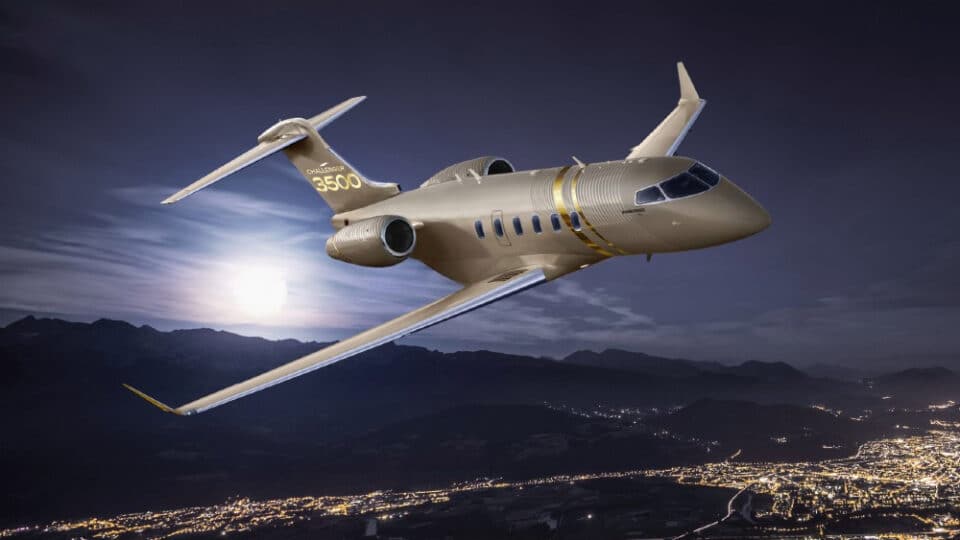Aviation
Bombardier Unveils the New Challenger 3500 to Shake Up the Super-Midsize Jet Category

- New aircraft offers innovative technology features from cockpit to cabin that further define Challenger’s leadership status
- Fully redesigned Challenger 3500 aircraft cabin introduces Bombardier’s revolutionary Nuage seat and has a lower cabin altitude
- Newest member of the renowned Challenger family is designed through a sustainable lens in line with Bombardier’s environmental objectives
- Entry-into-service is expected in the second half of 2022
Bombardier is proud to present the industry’s best super mid-size business jet, the new sustainably designed Challenger 3500 aircraft. The latest evolution of Bombardier’s hugely successful Challenger platform was introduced to the market today during an exclusive celebration in Montréal, Canada, and through a worldwide virtual launch.
The next-generation Challenger 3500 aircraft, the evolution of the Challenger 350 aircraft, introduces a redesigned interior with intelligent and sustainably minded cabin features crafted to combine comfort with function. Further elevating the passenger experience, Bombardier’s exclusive and patented Nuage seat is included in the aircraft’s standard configuration – the first time a seat of this calibre is available in the super mid-size segment. As part of an overall focus on passenger wellness, this new business jet will provide a reduced cabin altitude of 4,850 ft at 41,000 ft, representing a 31% improvement compared to its predecessor.
The Challenger 3500 aircraft also introduces several innovative technological features, such as the industry’s first voice-controlled cabin to manage lighting, temperature and entertainment systems, the first wireless chargers throughout the cabin and the only 24-inch, 4K display in its class. In the cockpit, Bombardier introduces a standard-equipped autothrottle system to the Challenger 3500 flight deck, which offers the most baseline features in its class. This new business jet is expected to enter service in the second half of 2022.
The new Challenger 3500 business jet is the latest example of Bombardier’s innovative spirit and approach to continuous improvement. Like its predecessor, the Challenger 3500 business jet is expected to have a strong market presence worldwide and will be a significant economic driver in North America.
Embraer Legacy 450 Sets Transatlantic Speed Record between the United States and Europe

Aviation
Airbus Enhances A350 Cabin with 10-Abreast Seating

Airbus has announced a new partnership with Jiatai Aircraft Equipment, a Chinese aircraft seating manufacturer, to supply upgraded economy-class seats for the A350 widebody series.
This collaboration, unveiled at the 2024 Airshow China, focuses on developing a newly designed economy seat tailored for the A350‘s New Production Standard (NPS) cabin.
One of the key features of the NPS cabin is the ability to accommodate 17-inch wide economy seats, compared to the previous 16.5-inch wide seats that airlines were limited to in the A350’s earlier configurations.
British Airways Unveils Its Brand-New First Class Cabin for the Airbus A380
This change is made possible by the expanded space in the NPS cabin, which is 35 inches longer and 4 inches wider than the previous version. This extra space is achieved by slightly moving the cockpit wall forward and shifting the rear pressure bulkhead back by one frame.
The wider cabin allows airlines to add up to 30 extra economy seats without compromising comfort. For airlines opting for a 3-4-3 seating layout, the 17-inch wide seats are an excellent choice for a more comfortable passenger experience. However, some airlines, such as Iberia, may choose to retain a 9-abreast layout with wider seats for added comfort.
The NPS cabin also offers enhanced flexibility for airline operators. One major advantage is the ability to easily switch between a 9-abreast and 10-abreast seating configuration without requiring significant downtime for aircraft reconfiguration. Airlines can use the same seat rails, tracks, and IFE interfaces, making the transition smoother and quicker.
Etihad Airways Unveils 10 Exciting New Routes for 2025
In addition, the design of the floor attachments and air-conditioning systems has been optimized for 10-abreast seating, meaning airlines can upgrade their cabins without needing to make substantial modifications to the aircraft’s structure.
Though it’s still unclear when Jiatai’s economy-class seats will be officially added to the A350’s Buyer Furnished Equipment (BFE) catalogue, the collaboration marks a significant step toward enhancing the A350’s cabin offerings.
With this partnership, Airbus is providing more seating options for airlines, ensuring that they can meet diverse customer needs while improving overall operational efficiency.
-

 Aviation2 months ago
Aviation2 months agoMicrosoft Flight Simulator Raises $3 Million to Bring Back the An-225 Mriya
-

 Airlines2 months ago
Airlines2 months agoQatar Citizens Can Travel to the United States Without a Visa
-

 Aviation2 months ago
Aviation2 months agoQatar Airways bans these new Electronic Devices on plane
-

 Airlines2 months ago
Airlines2 months agoJapan Airlines Rolls Out Free Domestic Flights to International Passengers
-

 Defence2 months ago
Defence2 months agoWhich Country Has the Largest Fleet of Fighter Aircraft?
-

 Airport2 months ago
Airport2 months agoWestern Sydney Airport Welcomes Its First Plane After 6 Years of construction
-

 Airlines4 days ago
Airlines4 days agoDAMAC Air: Dubai’s New Luxury Airline Offers Free Flights for Registration
-

 Aviation2 months ago
Aviation2 months agoDid you know ? Once Boeing 747 carried 1088 passenger in 1991








